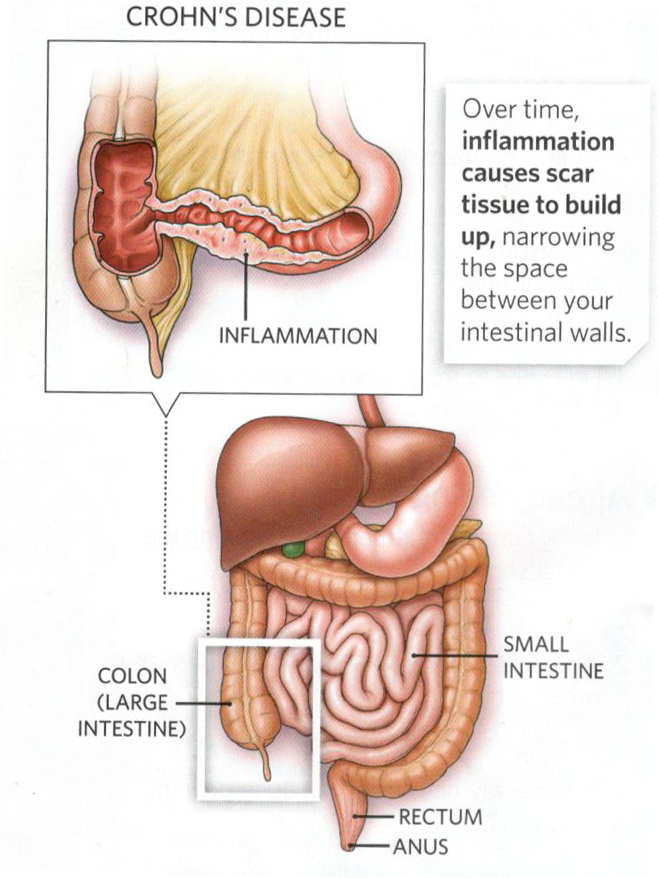|
Definition: Crohn's disease is a chronic, nonspecific, idiopathic gastrointestinal
inflammatory disease.
Crohn's disease is sometimes referred as regional enteritis, ileitis or ileocolitis:
regional enteritis because it may be characterized by segments of diseases bowel
with sharp borders on the affected regions; ileitis if only the ileum is involved;
and ileacolitis if both the ileum and the colon are involved.
Etiology: Crohn's disease has no known etiology. Many factors have been suggested,
but none are proven. Possible risk factors include immunologic factors; infection
agents 9such as bacteria, virus or amoeba); and dietary factors (including chemical
and drugs). Crohn's disease usually begins before age 35 with peak incidence between
14-24.
Clinical Manifestation: Crohn's disease usually beings with apthoid ulcerations
of the mouth, abdominal pain, diarrhea, fever, anorexia and weight loss. As inflammation
continues, patients may develop a right lower quadrant mass or fullness that mimics
appendicitis. The mass is palpable during physical examination. Some patients may
experience intestinal stenosis and partial obstruction characterized by severe colic,
abdominal distention, and constipation and vomiting. Pus, mucous and blood may be
present in the stool if the rectum is involved. Chronic cases of stenosis and obstruction
will lead to scarring, luminal narrowing a stricture formation.
In severe cases, abdominal fistulas and abscess may develop, causing fever, painful
abdominal masses, generalized malnutrition and muscles wasting. Fistulas may remain
in the gastrointestinal tract, or they may invade the surrounding areas sucha sthe
stomach, peritoneum and urinary bladder. Though rare, cancer has been observed in
chronic Crohn's patients.
In addition to various gastrointestinal symptoms, Crohn's disease is often associated
with other complications involving the eyes, mouth, skin, and joints. These complications
may be caused by immunologic response, microbiologic concomitants, genetic interrelationships,
or unknown reasons. Involvement of the eyes includes episcleritis. Mouth lesions
include aphthous stomatitis. Skin problems include erythema nodosum, pyoderma gangrenous
and pustular lesions. Joint involvement is characterized by arthritis of the larger
joints such as the knees, ankles, hips and elbows. Other complications include ankylosing
spondylitis, sacroiliitis and cholangitis.

|